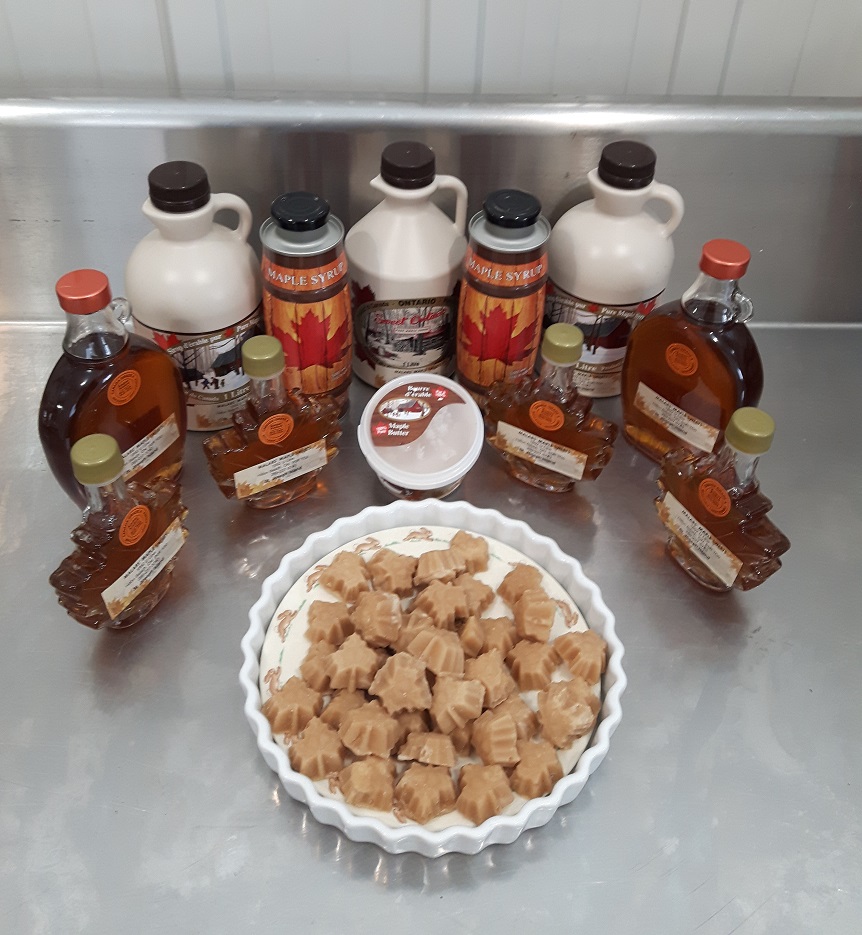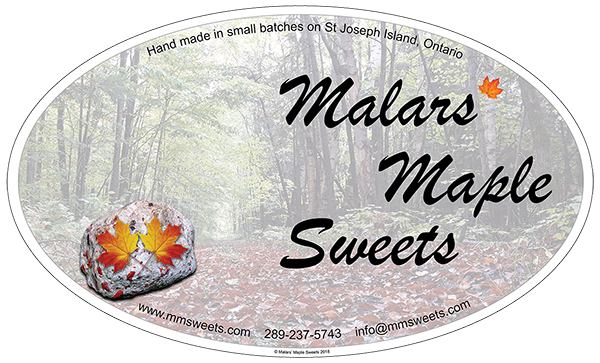Contrary to a surprisingly common belief, maple syrup does not come out of the trees as a finished product!
Here's how maple syrup gets from our farm to your table:
Toward the end of winter and before the daytime temperatures start to get above freezing, the maple trees need to be tapped.
Tapping the tree means drilling a roughly 1.25" deep hole of a diameter that fits the maple spiles (either a plastic or stainless steel pipe with a spout on one end that allows the sap to flow out of the tree in a controlled way) that will be used. Older styled spiles are typically 7/8" in diameter but the industry has moved away from those larger spiles (and larger holes in the trees!) to 5/16". Some farms with steep terrain use even smaller spiles for reasons that will be discussed below.
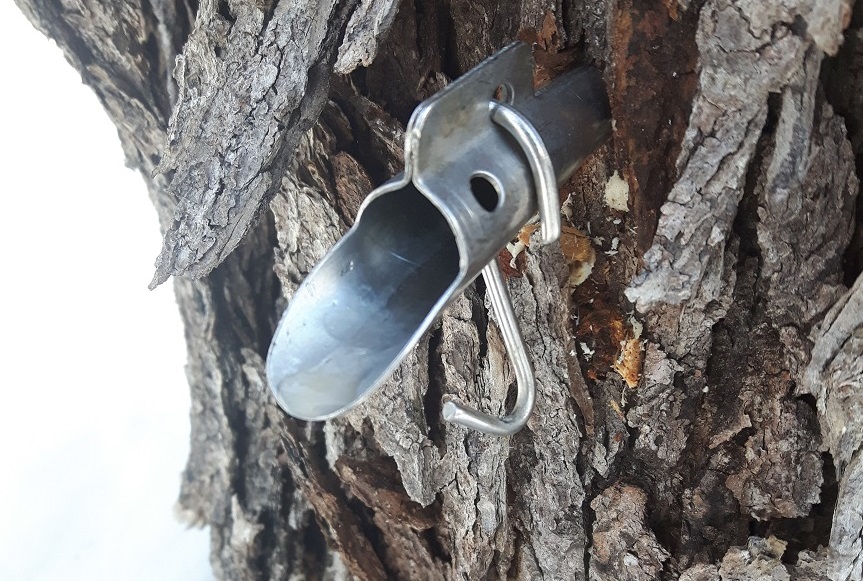
There are three different collection methods, all of which utilize taps:
- Individual buckets are hung on a hook that is built into the spile and the sap simply drips into the bucket. The buckets then have to be manually visited each day that sap is flowing before they become full, and the sap poured into larger pails and collected. This is great for smaller operations but can be a LOT of work for farms with many hundreds or even thousands of trees. This is the method we are using at the moment, but we're planning to move to the third method below in the next year or so.
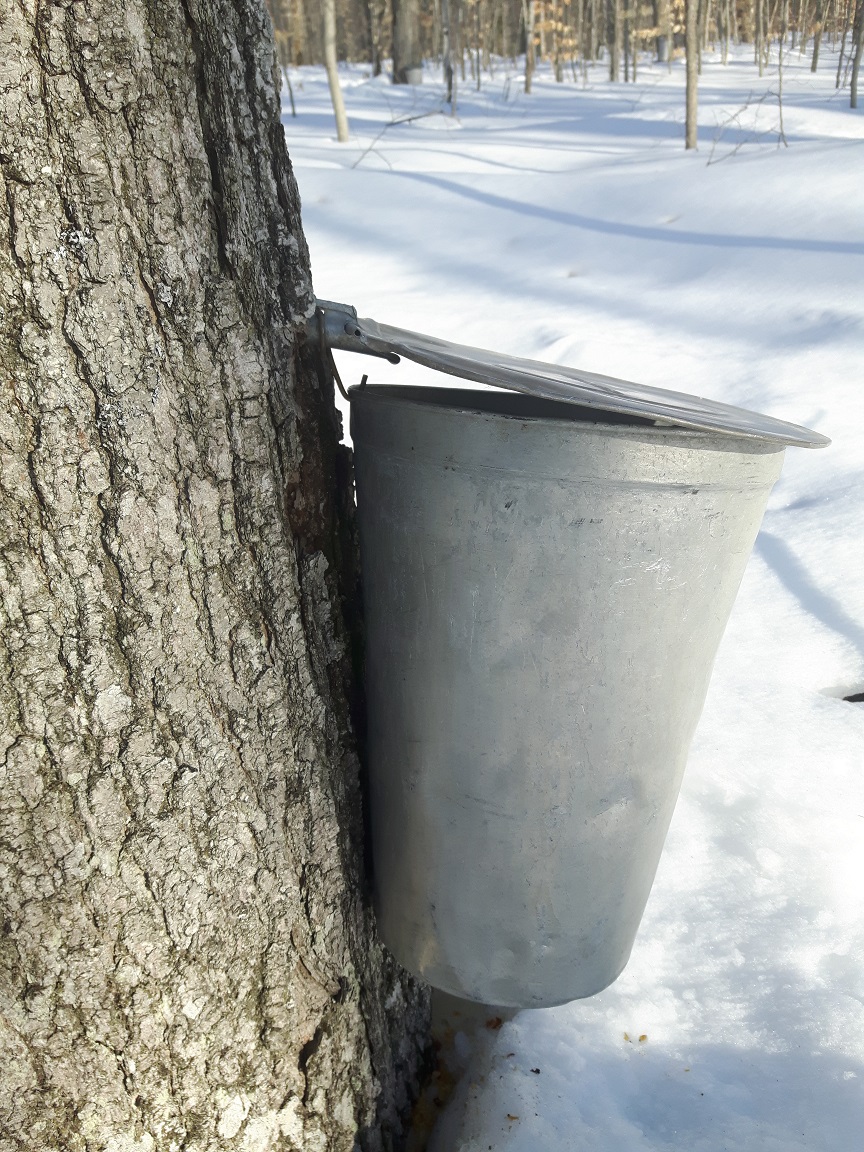
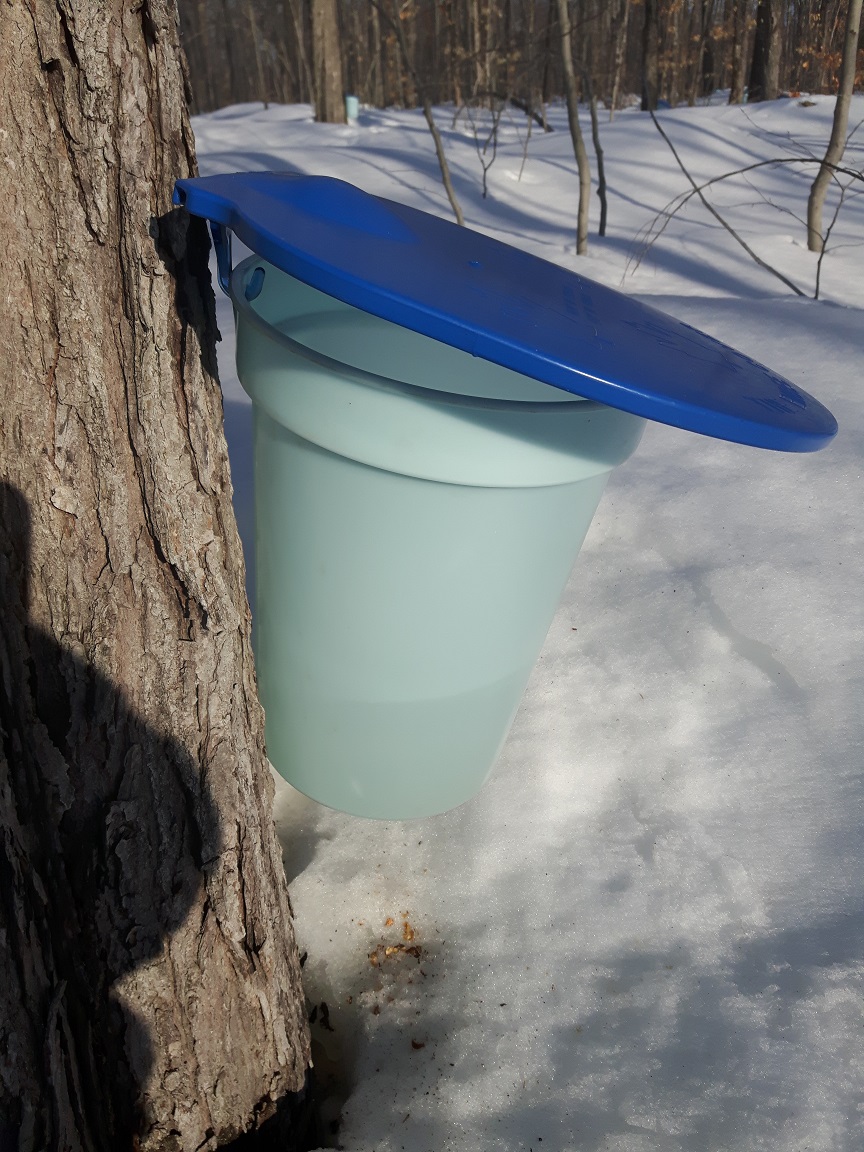
- If the terrain is sufficiently steep, the spiles are of a smaller diameter and are connected to food-grade tubing specifically designed for maple sap collection. A single tube may be connected to several trees in a downhill direction, and many of these small tubes connected to a larger main tube, also downhill, which then flows to a central collection tank at the lowest point in the maple forest. By using small spiles and tubing, and the effects of gravity on the steep terrain, a large amount of vacuum can be generated in the tubing (sometimes comparable to the amount generated by a powered vacuum pump but without all the mechanical complications and costs). The vacuum makes sap extraction from the maple tree way more efficient, possibly even doubling the amount of sap that could be garnered from individual buckets.
- If the terrain isn't steep, typically 5/16" spiles are used along with matching tubing. Again, several trees can be connected to a single tube which is fed into a larger sized main tube. The main tube (aka "mainline") collects sap from many smaller tubes and directs the sap to a central collection point using one or more mechanical vacuum pumps. Depending on the layout of the property and the slopes involved, this collection point could be at the sugar house or could be out in the forest. The sap is then either moved to a portable tank for transport to the sugar house or, more commonly, pumped directly to the sugar house. Again, the use of vacuum in the tubes increases the productivity of the trees by about double the amount of sap that would be collected via a bucket.
Once the maple sap has been collected, it needs to be processed. The raw sap has a very low sugar concentration, typically about 2 percent, although that figure can vary from 1 to about 3.5 percent or so depending on the year and how early or late in the season the sap was collected. Because the sugar content is so low, a LOT of water needs to be removed from the sap in order to concentrate it. To give you an idea how much water is removed, it takes roughly 40 litres of sap to produce 1 litre of finished maple syrup -- a 40:1 ratio.
The primary way of doing this is to boil the sap. The water is removed in the form of steam and the sugars remain. Additionally, the heat of the boiling cooks the sugars in a process known as caramelization, which gives the finished product a darker colour and a nice flavour.
Some farms use a process of Reverse Osmosis prior to boiling the sap in order to remove a large portion of the water. Reverse Osmosis uses high pressure pumps to push the sap through a special membrane with openings that allow water molecules to pass through but nothing else. This very quickly concentrates the sap and reduces the amount of boiling that is required, which greatly increases efficiency; however, the boiling step can't be skipped entirely because, without it, the colour and flavour that boiling produces, would be missing from the finished product.
The maple sap is boiled in a piece of equipment called an Evaporator. It works the same way as a regular pot on a stove would, but has been optimized to be as efficient as possible. Modern evaporators have a flue pan with many channels in them to maximize surface area -- the more surface area that a pan has exposed to heat, the faster and more efficient the boiling process. Evaporators, depending on their size, may also have several "finishing pans" in which concentrated sap from the flue pan flows, to be further refined into a finished product. The finished product will have a sugar concentration of about 66 to 68 brix and can be called maple syrup at this point. Our evaporator is about 14' long with a nominal surface area of 12' long x 3' wide and is wood-fired (some are powered by oil, natural gas, propane, etc.).
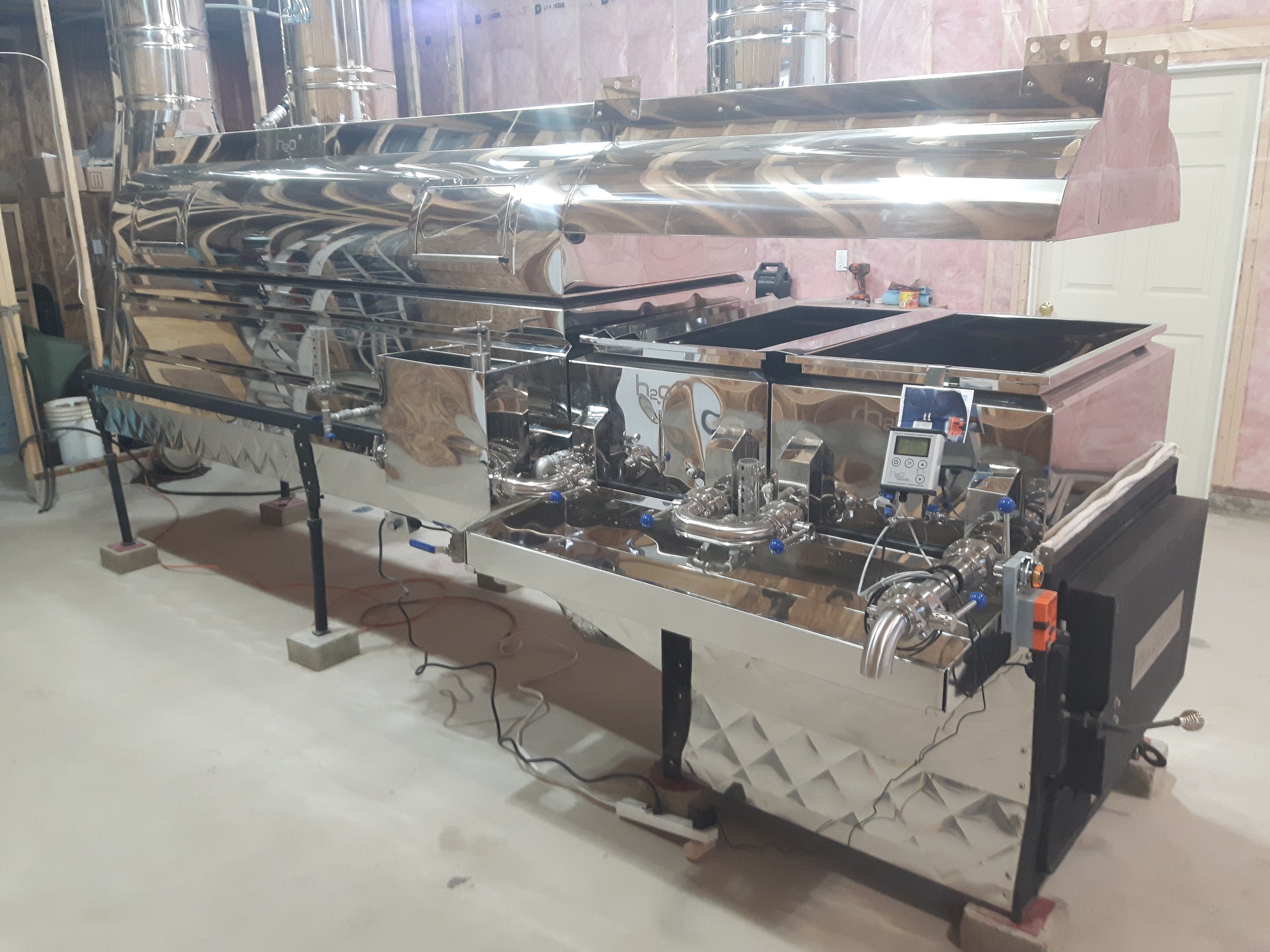
But we aren't done yet.
Once the maple syrup has been drawn off from the evaporator, it needs to be filtered to remove any impurities and to improve its clarity. This can be accomplished by pouring the hot syrup into a filter bag (often cone-shaped) and collecting the filtered syrup in a clean container once it has passed through the filter.
For larger operations, a device called a filter-press is used. The filter-press uses a mechanical pump to force the hot syrup through a series of filter plates and into a clean container. The advantage of the filter-press is the speed that it achieves and the large volume that it can handle compared to a gravity filter, and this is the method that we use.
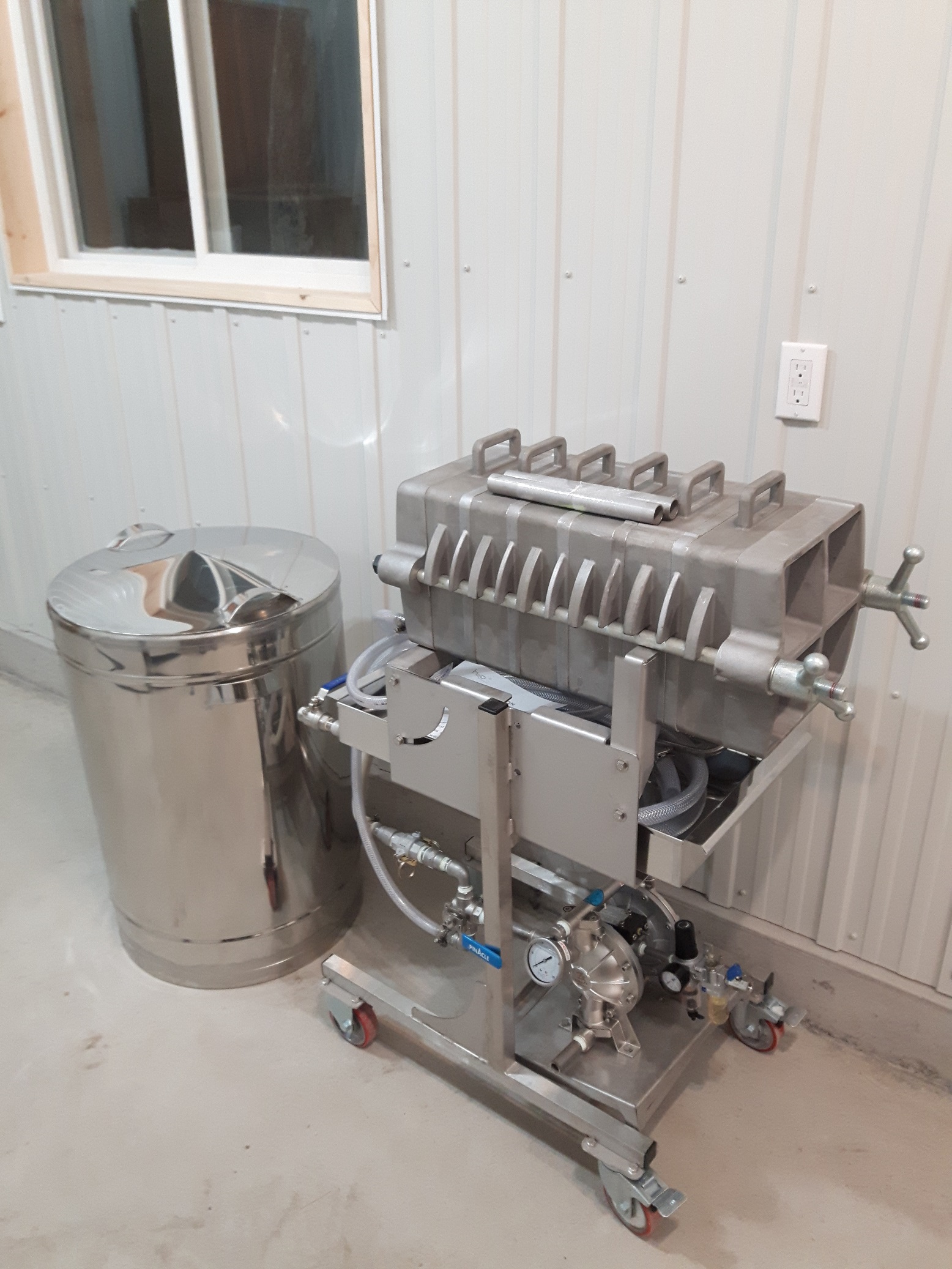
After filtering, we're ready for bottling.
The maple syrup is brought up to a temperature in the range of about 190 degrees Fahrenheit (about 88 C) using a purpose-made bottling machine (we use one of these) or, for smaller volumes, a large pot on a stove, and it is then poured into bottles and sealed. The high temperature used in the bottling stage pasteurizes the syrup, preventing any microorganisms from sneaking in, growing, and causing problems.
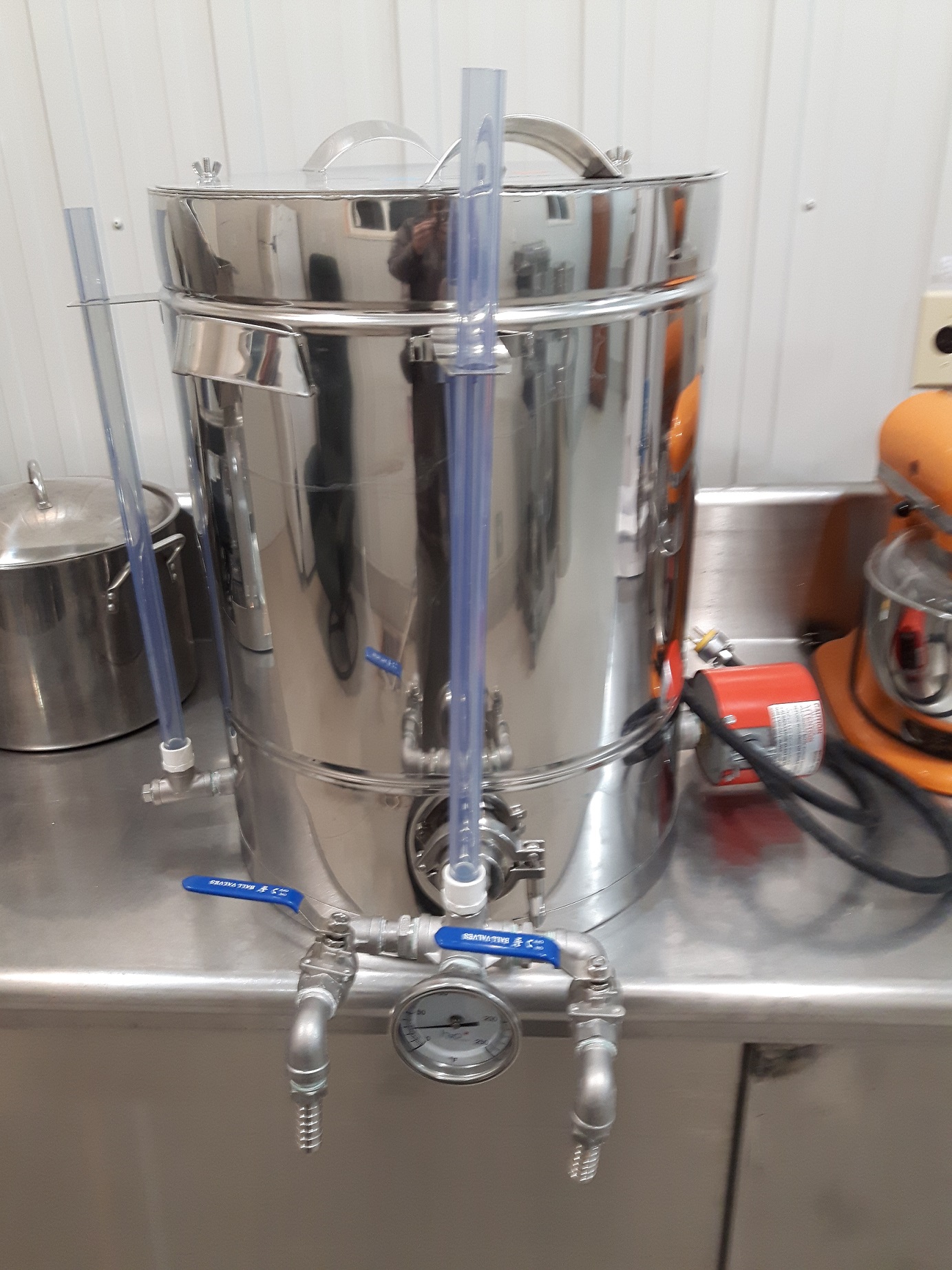
The bottles are then labeled appropriately with the company name, date, grade of syrup, batch number, etc., and are ready for use.
As you can see, there is a lot more to it than just tapping a tree, but the results are so tasty, it is all worth it!
